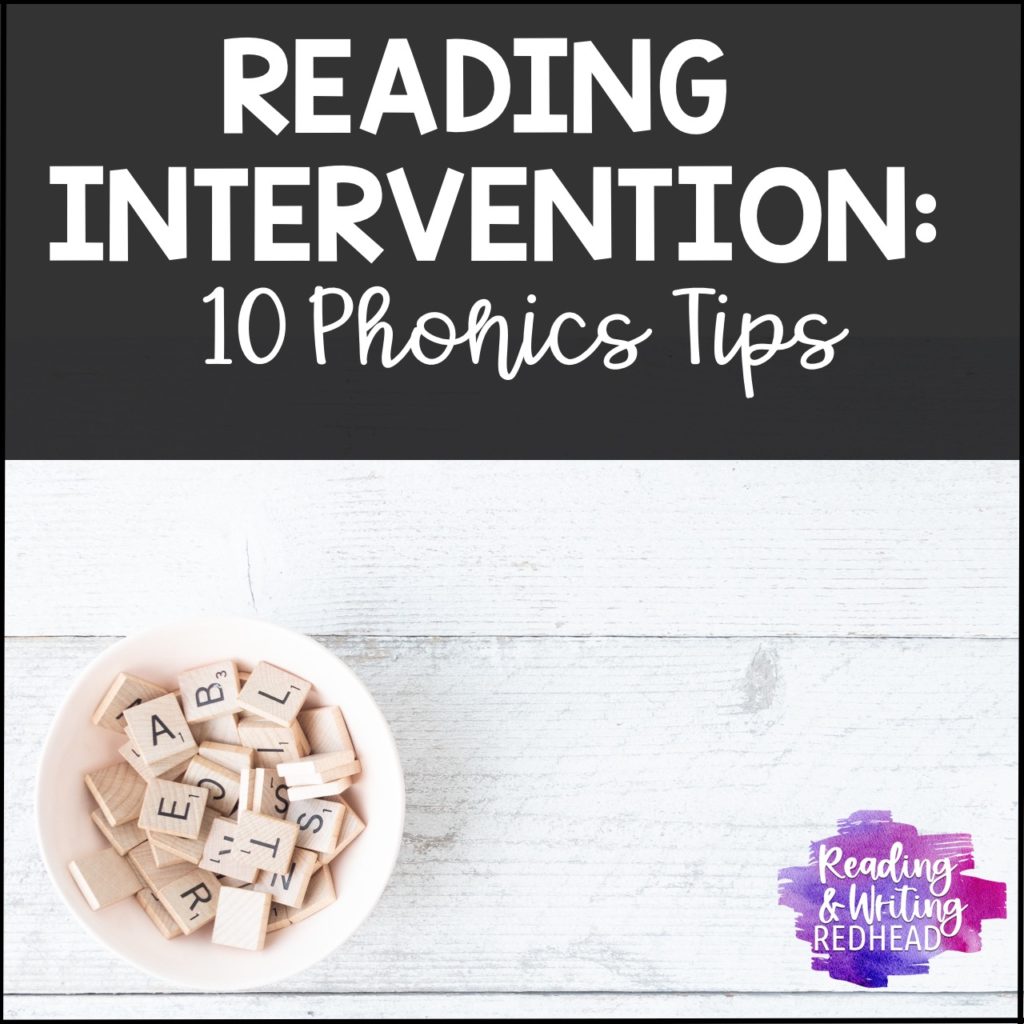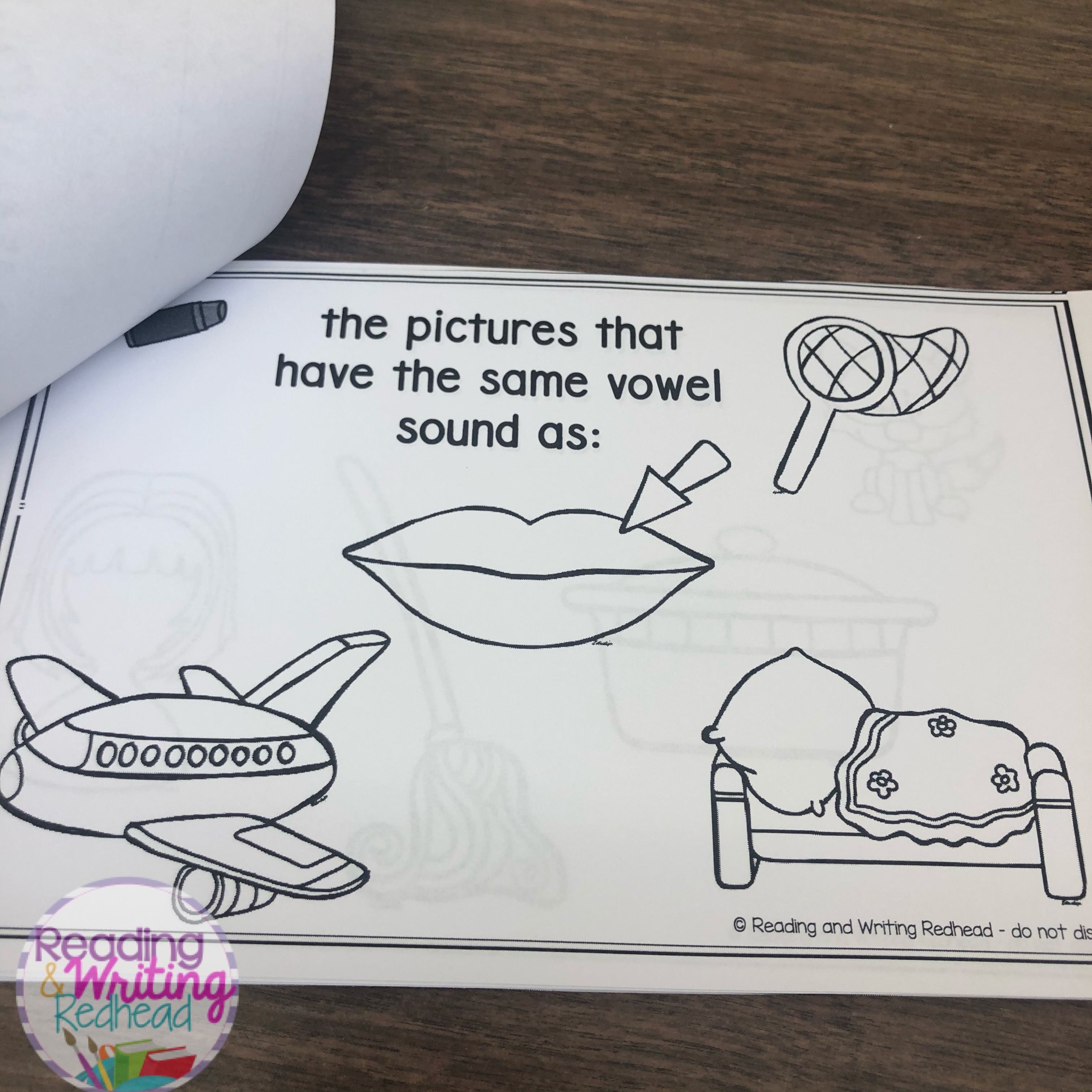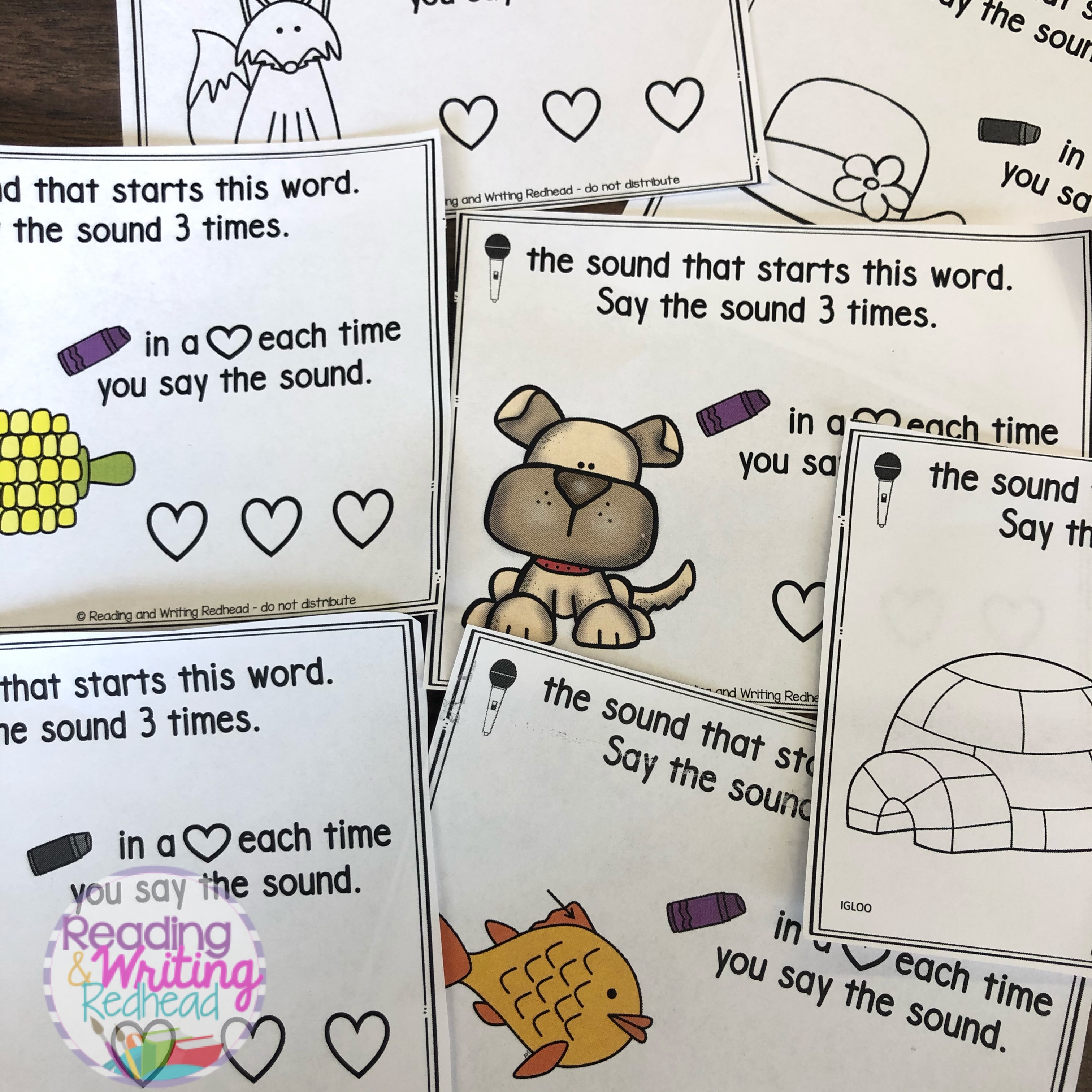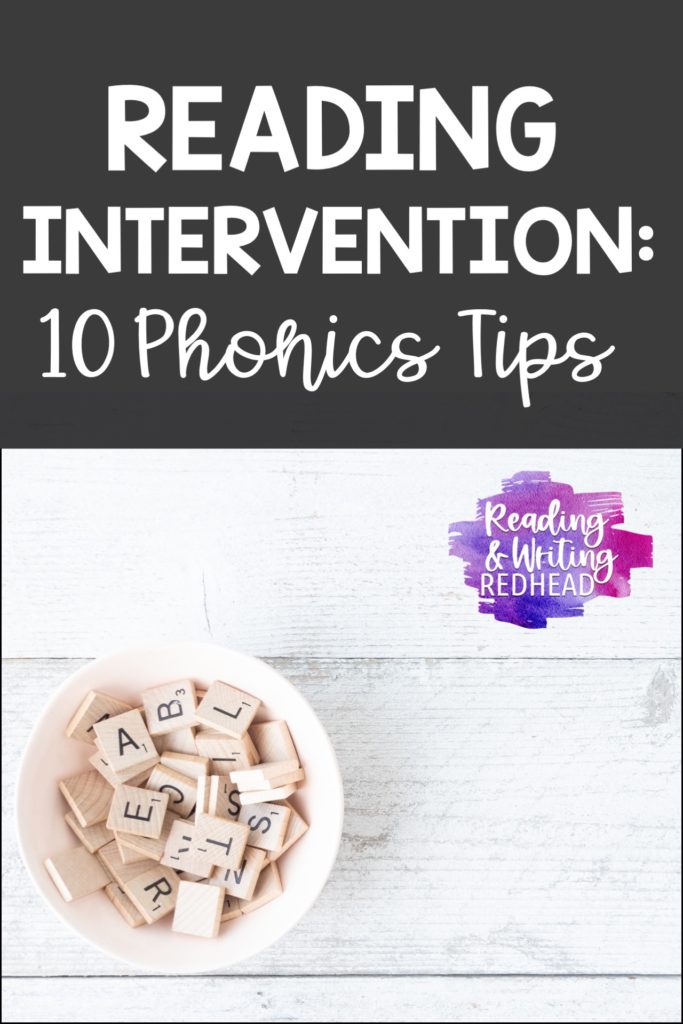
Today we’re jumping in to the third of four blog posts about reading intervention! Today I have ten phonics tips for you to help your struggling readers. But before that…
Make sure you read the first two posts in the series:
Reading Intervention: Where to Start
Reading Intervention: Phonics and Sounding out Words
Tip 1: Double check that students really know all their letters and sounds – you can show them a sheet with the letters in the alphabet in random order and make sure they can identify the names of all 26 letters, both lower and upper case. Also ask them to point to each letter and tell you what sound it makes. If they don’t know all the letter sounds, you need to start there.
Tip 2: Keep working on oral blending as I mentioned in the post Reading Intervention: Phonics and Sounding out Words.
Tip 3: Work on identifying how many sounds there are in a given word like at or fun. Students can benefit from hearing or looking at words and counting sounds (phonemes). This reinforces what they know about sounds and words and helps solidify their phonics skills.
Tip 4: Show children or tell them a target beginning sound, final sound, or vowel sound (do this one last). Have students practice finding other words with the target sound. Here’s one way to practice!

Tip 5: Do your students need practice beyond what your school’s program provides for letter sounds? Have them look at letters and say their sounds. This can be teacher-led or once students catch on, they can practice with cards like these.

Tip 6: Look at a letter and practice saying the sound of that letter – simple and can be teacher led or monitored in a small group.
Tip 7: Keep reviewing blending and reading words. After students master CVC words, work on digraphs, other skills, and eventually do silent e syllables, which are needed to read a lot of first grade texts.
Tip 8: Spell words either that you dictate or words pictured on a task card. Start with CVC words, and continue on with skills that students have been introduced to but have not mastered.
Tip 9: Read sentences with known trick /sight words and CVC words or other words with phonics patterns that have been practiced.
Tip 10: The last of my phonics tips for you is: Write short sentences containing a target word – give students a word containing phonics skills that you have been reviewing such as cab, pot, or chin, and students write a sentence with the word! For fun and if students have time they can illustrate it too.
Are there more phonics tips you want to add? Comment and let me know! Next week I will jump into the final topic in reading intervention!
BLOG POST SUGGESTIONS FOR FURTHER READING:
- 5 Frustrating Myths about Teaching Reading
- Fun Ways to Practice Spelling Trick Words
- Dos and Don’ts of Teaching Reading
Also, if you want to grab a freebie to accompany this blog post , click here and sign up for the RWR Insiders Club today (free, unsubscribe at any time of course) and the freebie will be yours, downloadable from the Freebie Resource Library on my blog.
~Bex





